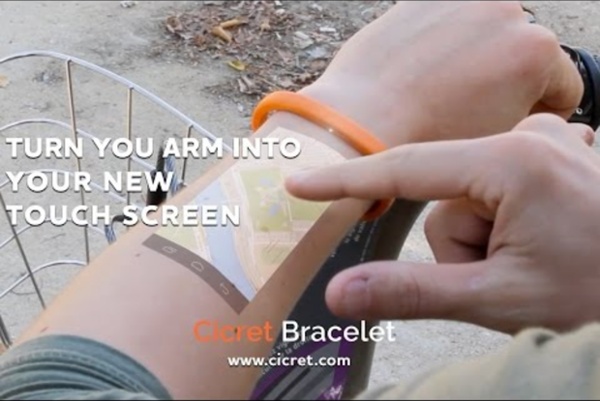



Système d'alarme - Tryba protection Alarme > Le système d'alarmeLe système d'alarme est le coeur de votre installation. Sans un système d'alarme, performant, il est impossible de lutter contre les cambriolages. TRYBA PROTECTION vous propose les composants suivants pour votre système d'alarme. Composé de plusieurs éléments reliés entre eux par radio (3 sont indispensables : la centrale transmetteuse, la sirène et le détecteur de présence) et alimentés par des piles lithium, le système d'alarme est installé rapidement et à moindre coût puisqu'aucun fil n'est posé dans les murs ou sous le plancher. L'abonnement à une formule adaptée à votre maison ou à votre appartement permet ensuite à votre système d'alarme sans fil d'être relié au centre de surveillance et de protéger efficacement vos biens et votre famille. Découvrez aussi Tryba Energies :
Half man, half machine: Scientists engineer first 'cyborg' tissue - which uses living human cells and organic polymers Harvard scientists created 'cyborg' skin from neurons, heart cells, and nano-electronic wiringWiring allows scientists to detect and respond to pH changes on the tissue's surface, the same as human skin By Daily Mail Reporter Published: 04:43 GMT, 30 August 2012 | Updated: 16:31 GMT, 30 August 2012 It like it’s something out of a science-fiction movie – genius scientists engineer a synthetic skin that’s part living, part electronics. But scientists at Harvard University have done just that, creating meshes of electronic and biological tissue. The end result is cyborg tissue, which is created from electrodes and wires combined on a Nano-scale. Engineering humanity: Scientists at Harvard have found a way to create cyborg skin, using nano-wires to mesh and human cells High tech: Here, cardiac cells are pictured with a nano-electroic electrode highlighted The results, published in Nature Materials, detail how scientists in the lab embedded electrical nanowires into the lab-grown flesh.
15937955875 c38b35be1e n Presentation de la domotique et des systémes d'automatisation de maison inteligente. La Domotique : La domotique regroupe les techniques permettant d'automatiser, de programmer et de controler son habitat. C'est une discipline assez récente qui s'est beaucoup dévelopé ces dernières années avec les progrès de l'informatique. Le mot "domotique" vient des mots domus (qui veut dire domicile en latin) et du suffixe "tique" associé à la technique. L'utilisation de la domotique concernent les appareils techniques alimentés par l'électricité : L'éclairage, le chauffage, l'audio-visuel, l'électro-ménager... La domotique permet aussi le contrôle : alarme, contrôle d'accès, température, incendie... Les principaux but de la domotique sont de : - Pouvoir contrôler à distance ou directement chez soit, le comportement des appareils qui sont intégré au système domotique. - Automatiser les tâches répétitives du quotidient (ex : au réveil, ouvrir les volets, activer la climatisation, désactiver l'alarme ...) - Mieux gérer la consomation en électricité et donc faire des économies.
Flexible sensors turn skin into a touch-sensitive interface for mobile devices iSkin is a thin, flexible, stretchable and visually customizable touch sensor that can be worn directly on the skin. Saarland University computer scientists created three novel classes of on-body devices based on iSkin: (a) FingerStrap, exemplified here with a strap on the index finger for fast, one-handed control of incoming calls; (b) Extensions for wearable devices, exemplified here with a rollout keyboard attached to a smart watch; and SkinStickers, exemplified here with (c) an input surface for a music player attached to the forearm, (d) a click wheel on the back of the hand, and (e) a headset control behind the ear. (credit: Martin Weigel et al./CHI ’15) Computer scientists at Saarland University and Carnegie Mellon University are studying the potential use of the human body as a touch sensitive surface for controlling mobile devices. By operating these touch input stickers, users can use their own body to control mobile devices. Give me some skin
cicret smart bracelet Simulation domotique Lancer le logiciel simulation domotique : Ouvrir le dossier Simulation qui est sur le bureau de Windows. ( Double clic ) Ouvrir le 1er fichier Simulation. ( Double clic ) Vous avez 3 programmes à faire : Human Genetic Engineering What forms of genetic engineering can be done in human beings? Genetic technology harbors the potential to change the human species forever. The soon to be completed Human Genome Project will empower genetic scientists with a human biological instruction book. The genes in all our cells contain the code for proteins that provide the structure and function to all our tissues and organs. Knowing this complete code will open new horizons for treating and perhaps curing diseases that have remained mysteries for millennia. But along with the commendable and compassionate use of genetic technology comes the specter of both shadowy purposes and malevolent aims. For some, the potential for misuse is reason enough for closing the door completely--the benefits just aren't worth the risks. Since we have introduced foreign genes into the embryos of mice, cows, sheep, and pigs for years, there's no technological reason to suggest that it can't be done in humans too. Edward O. Notes